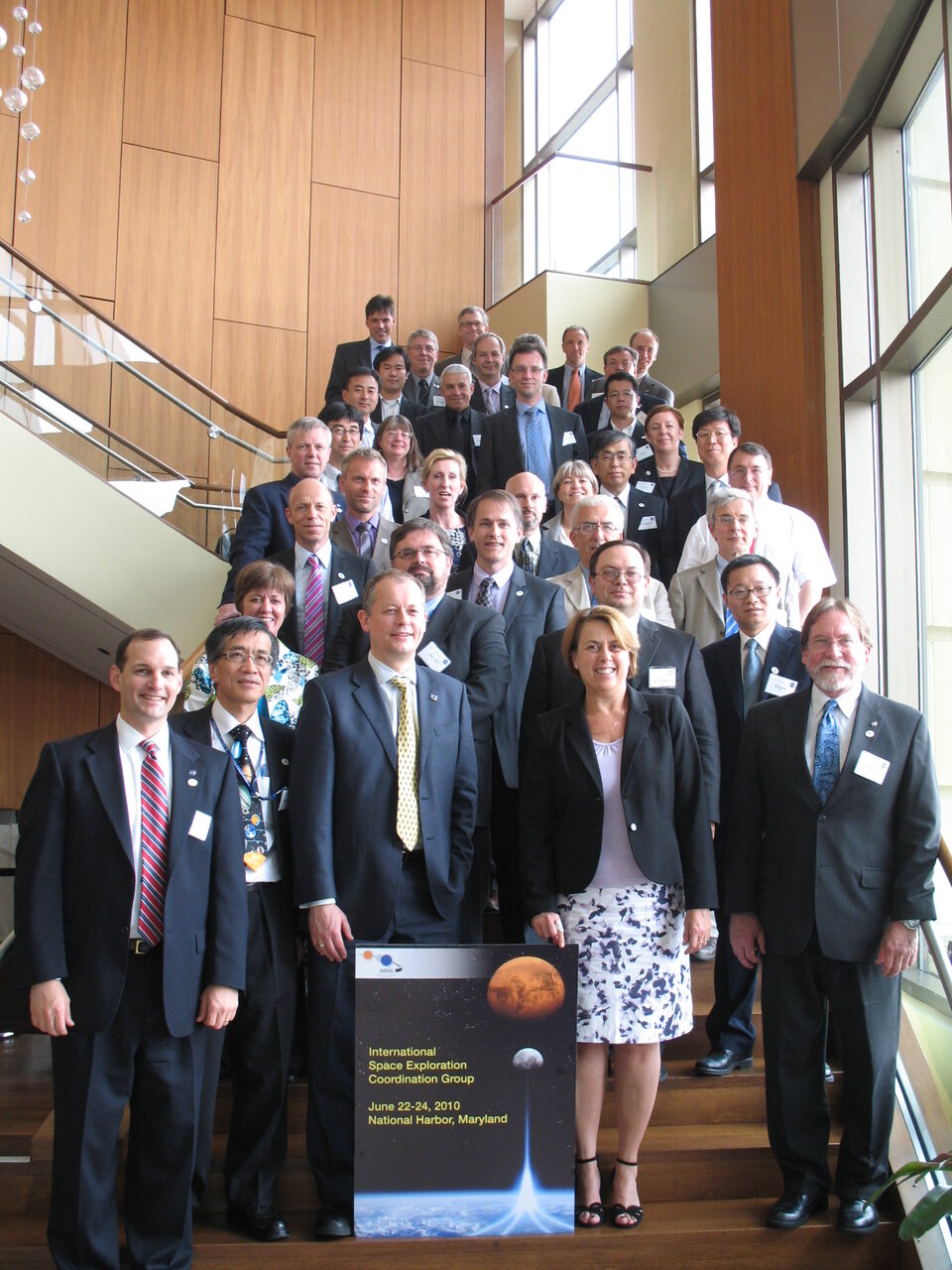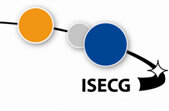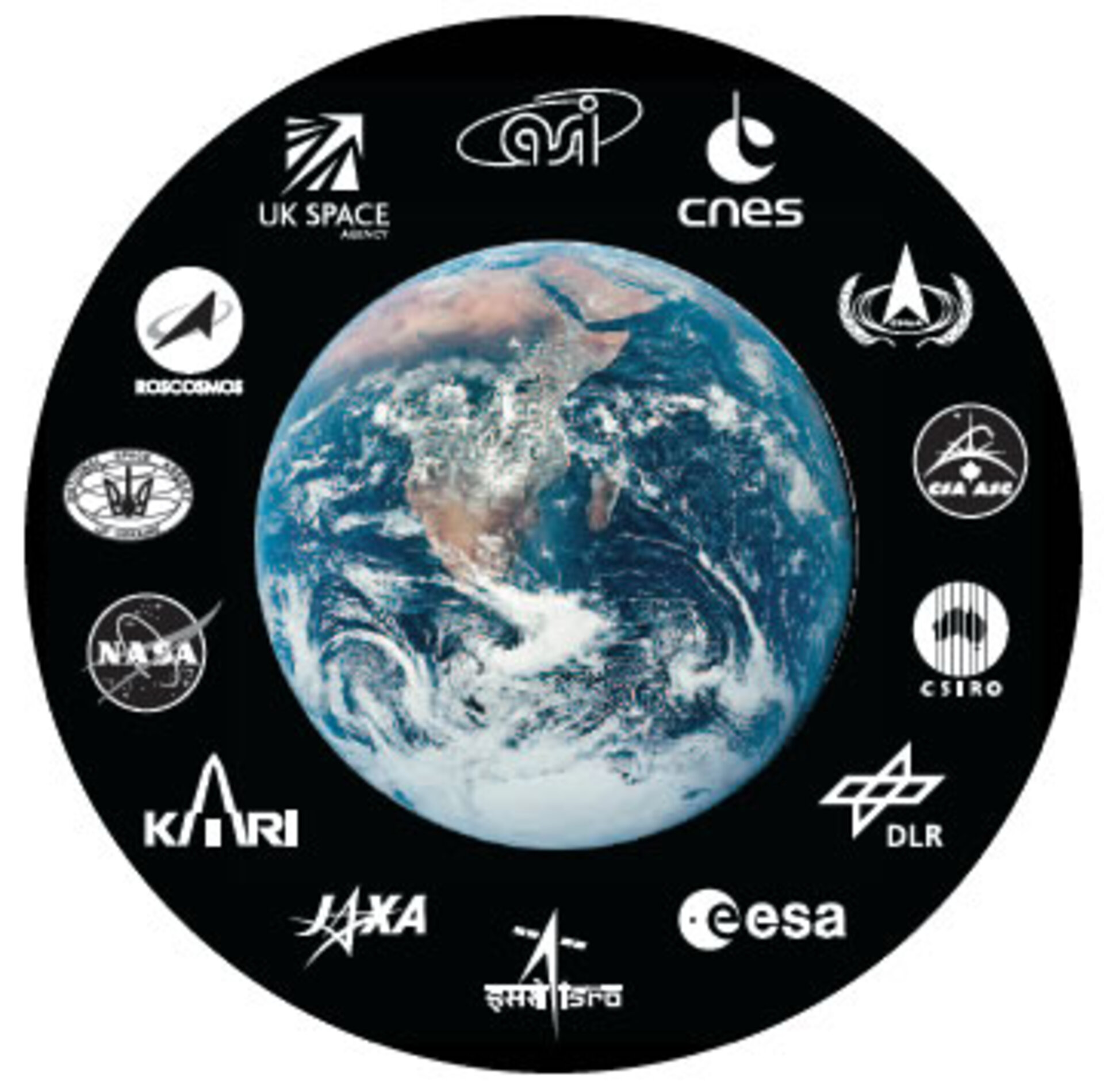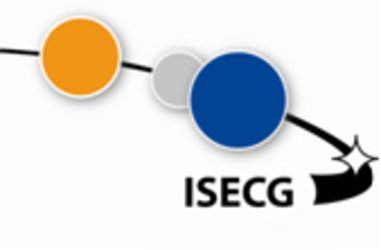Exploring together
Sustainable space exploration is an opportunity for all of humankind, and a challenge that no single Nation can meet on its own. During the International Astronautical Congress (IAC) held in the Czech Republic, leaders of space exploration from some of the space agencies supporting the Global Exploration Strategy (GES) have spoken the same words: international cooperation.
Their collective view is embodied in the work of the International Space Exploration Coordination Group (ISECG), a voluntary, non-binding mechanism through which individual agencies exchange information regarding interests, objectives and plans for future human exploration beyond low Earth orbit, as spelled out in the GES.
Together they took the unprecedented step of elaborating a common strategy for peaceful human and robotic space exploration, focusing on destinations within the Solar System where humans may one day live and work.
A global strategy

The story of this cooperation goes back to 2007, and even earlier to a series of “Spineto Workshops”. As the result a common vision has been articulated and dubbed the Global Exploration Strategy, an open framework that took into account contributions of all nations to participate in the expansion into space and benefit from it.
Four years later, at the world’s premier international space gathering, the ISECG has made public in a plenary session for the first time the commitment of its members to coordinate their efforts towards global space exploration. Six senior agency representatives, who met last June in Washington D.C., came together once again to reinforce the message of collaboration.
ESA Director of Human Spaceflight, Simonetta Di Pippo, was instrumental in the creation of this group for space exploration as a global endeavour. During the session, she said that “The Global Exploration Strategy can bring nations together for a common objective, reveal new knowledge, inspire young people and stimulate technical and commercial innovation on Earth; similar to what we have achieved through the ISS partnership, but on a global scale”.
Identifying near-term opportunities for cooperation is a priority for the fourteen agencies. Global and sustainable space exploration signifies “a collective will to find answers to profound scientific questions, to discover our place in the Universe and to create new economic opportunity”, explained Di Pippo.
The exploration roadmap

The ISECG has started a Global Exploration Roadmap which targets the destinations where humans can one day live and work. Resolved to explore our nearest companions—the Moon, Mars and some nearby asteroids- the goal is not a few quick visits, but rather a sustained and ultimately self-sufficient human presence beyond Earth supported by automatic precursor pathfinders.
The near and long-term scenarios to the Moon are described in the ISECG Reference Architecture for Human Lunar Exploration – an international vision of the steps to be taken to settle on the lunar surface. The campaign to our closest ‘natural space station’ entails five distinct phases over time, starting with an early robotic phase that will lead to extended crew expeditions of at least 60 days.
While pioneered for lunar exploration, this study serves as a useful model for designing multilateral architectures to explore Mars and other destinations in the solar system. The International Space Station will play a key role in these plans by enabling development of critical technologies for exploration, but also helping to strengthen international partnerships and build new ones.
Under the theme ‘Space for Human Benefit and Exploration’, the GES/ISECG initiative has been widely represented in six different symposia at IAC.
The agencies members of ISECG are, in alphabetical order: ASI (Italy), UKSA (United Kingdom), CNES (France), CNSA (China), CSA (Canada), CSIRO (Australia), DLR (Germany), ESA (European Space Agency), ISRO (India), JAXA (Japan), KARI (Republic of Korea), NASA (United States of America), NSAU (Ukraine), Roscosmos (Russia).





